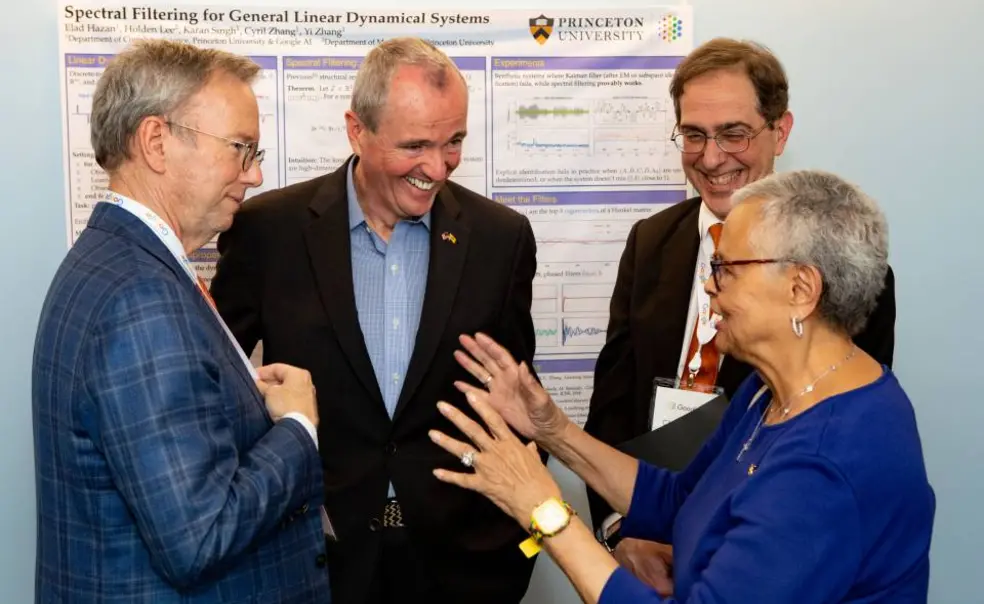Princeton and Google Launch New AI Lab
The University has formally launched its latest collaboration with the private sector — the new Google artificial-intelligence lab across the street from FitzRandolph Gate — with President Eisgruber ’83 citing the potential for breakthroughs in “a dazzling variety of fields.”
“By bringing together talented researchers from Princeton and Google, and by giving them access to Google’s exceptional computing resources, this collaboration promises to deepen our understanding of machine learning and produce exciting innovations,” Eisgruber said at the May 2 opening.
The new lab will build on research in machine learning by lab leaders Elad Hazan *06 and Yoram Singer, Princeton professors who now split their time between working for Google and the University. Machine learning is a subfield of AI that allows computer systems to find patterns in large amounts of data and ultimately make decisions on their own.
At the event, former chairman and executive CEO of Google Eric Schmidt ’76 remembered attending lectures by Professor Brian Kernighan *69 and driving with former professor Jeffrey Ullman to Bell Labs as an undergraduate “because that’s where I had to go to get access to the most extraordinary things.” As a result, the 20-year-old Schmidt wrote a piece of code that is still in use at Google. Schmidt said he hopes the Google AI lab can replicate that opportunity for others.
“The formula can be understood as take the smart people who exist across the street, combine them with the leadership here, merge them together into a team using [Google’s] entire 100,000 people [and] $100 billion of revenue,” Schmidt said.
Some students, however, worry that Princeton’s academic freedom could be compromised by one of the most powerful and wealthy corporations in the world. “How can the University expect professors to study AI as a pursuit of truth if their work profits Google shareholders?” Jon Ort ’21 asked in an opinion piece for The Daily Princetonian.
Research dean Pablo Debenedetti, engineering school dean Emily Carter, and other faculty members responded in the Prince that professors work closely with a wide range of companies through collaborations of different forms. Carefully negotiated agreements give faculty the freedom to “pursue whatever research they see fit and to publish their results at will,” they wrote.
For now, the primary advantage of the collaboration for students like Karan Singh, a fourth-year Ph.D. student in computer science, is access to Google resources for computational components of their research. “Simulations require huge computational part that is hard to do in campus settings,” he said. “Using Google Cloud and graphic processing units (GPUs) allows us to shorten the run time — to do in six hours something that takes five or more days on commodity hardware.”
Hazan credited the early work of Princetonians including Alan Turing *38, John von Neumann, and John Nash *50 for laying the foundations for Princeton’s influence in the history of computer science and machine learning.
New Jersey Gov. Phil Murphy emphasized the lab’s potential to grow New Jersey’s innovation economy.“In many respects, we were the Silicon Valley before there was a Silicon Valley,” Murphy said. “And we want to take that back.”
The 24-seat lab is currently only half full, with two faculty members and 10 student researchers, but more faculty members are expected to join during the summer and fall months.












No responses yet